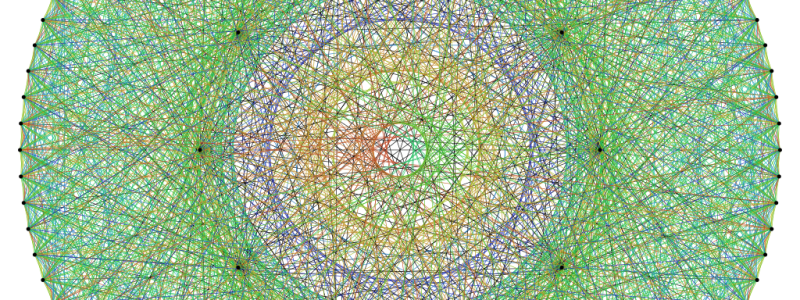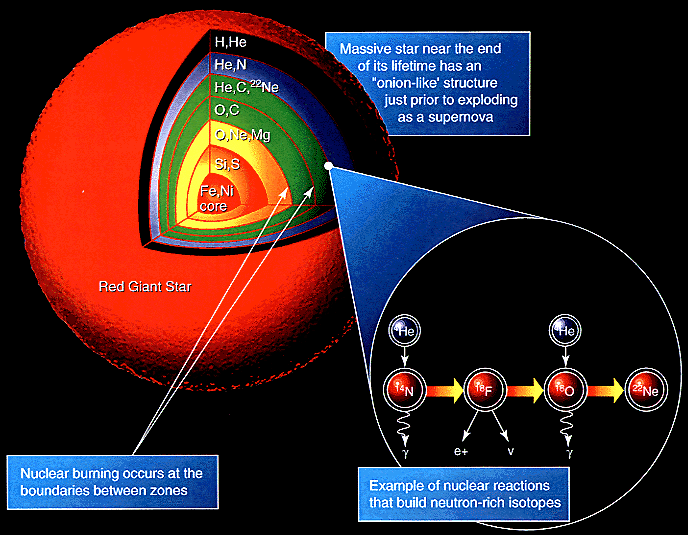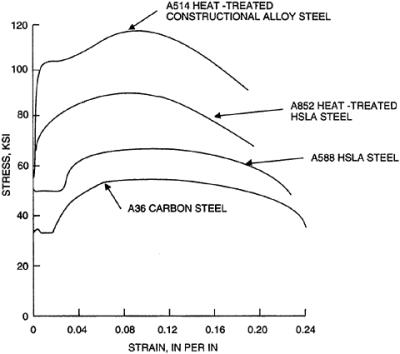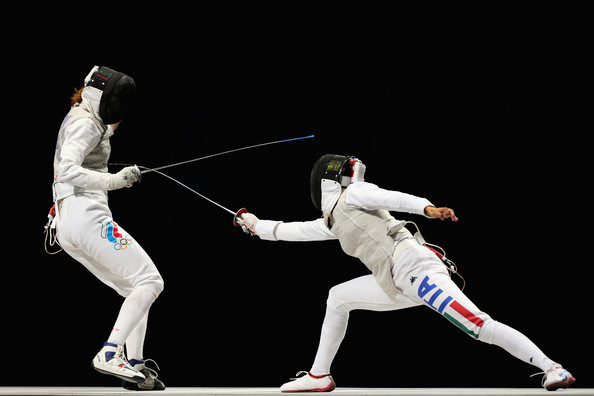Whether it is chocolate covered strawberries, cafe con leche, or the wonderful assortment of ingredients in paella, the right food combinations can taste so good. Combinations can also provide incredible insight for design and decision making. As I learn more about math, nature, and paella, I gain new perspectives on how they may influence my approach toward design and the process.
Consider the uncertainty principle in quantum mechanics (QM), or more specifically the thought experiment of Schrödinger’s cat. A cat, in a closed box, with a vial of poison. Is the cat alive, or dead (0 or 1). Of course, if it is thought of as a single problem of a cat in a box with poison, the easy way to know the state would be to open the box and observe the cat. An issue in QM however, is that observation is fuzzy. Before opening the box, the cat could be thought of as simultaneously alive and dead. Opening the box and observing the cat, reveals the state of the cat, collapsing the wave function. This is employing something called the quantum superposition which is the idea behind the qubit in quantum computing, and the idea that I would like to apply toward design.
The many worlds interpretation of quantum mechanics suggests that a different universe exists for every possible outcome. The moment that we consider to be the now, is one outcome of a very large number of possible outcomes since the big bang. I like to imagine it much like the picture below of the fractal tree, only much larger. Every point where three branches come together is a node where some event could have deviated, with the base “trunk” symbolizing the singularity prior to the big bang, or the universe at time=0. Energy burst from the singularity, and with every possible outcome, the trunk splits, creating branches. As time goes, the universe expands, the branches split over and over, and the tree of other possible states of the universe grows. The tree shown here would symbolize the superposition of the very beginning of the universe.
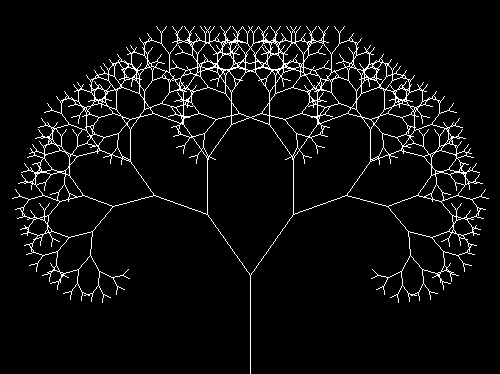
Given the age of the universe of 13.7 billion years, the size of the tree that would represent all possible outcomes is unfathomably large. In physics this is known as a point in the 7th dimension. The complete tree represents the set of all possible combinations that could have ever been. Imagine some database of all of that information, and if all of those combinations could be known or accessed. Consider the branching pattern that represents the timeline preceding the reality of the present. This is the full account of everything that has ever happened. If we had access to such a structure, and the ability to analyze it, there would be no need to theorize causation from correlation, because it would be a literal map of causation for the universe. Reverse engineering could be done by climbing the branch connections.
The combinations leading to the development of life and evolution would be there, explained in the fullest of detail. In the first several minutes after the big bang, the elementary particles of the universe formed, in addition to the first few simple elements such as Hydrogen, Helium, & Lithium. Over many millennia, nucleosynthesis within stars spawned the creation of the remaining natural elements, resulting in a total of 94 (and probably many more created in distant star systems). Those elements burst forth from supernovae, and cooled and coalesced to create molecules. Interaction of molecules combined to create amino acids and protein structures, the building blocks to life. Of course, such a database does not, and probably could not exist, but it’s fine, it’s just a thought experiment.
What does this have to do with art, music, design, or architecture?
I tell this perspective of combinatorics in the creation of the universe to illustrate the large set of possible options that could exist based on given conditions and the number of possibilities the state of the given elements could be arranged. It is my view that combinatorics that exist in the universe can provide inspiration and insight for organizational structures in a design project. Perhaps with the right amount of constraints imposed, a countable set of possible combinations may be explored for a design project. However, such novel combinations are just a tiny fraction of all of the combinatorics at play. When I consider this analogy, I am both inspired and overwhelmed. The set is too large to search with brute force, and the probability to randomly select a combination that can satisfy all of the constraints is infinitesimal. A clever heuristic must be employed to find satisfying combinations.
In applying this concept to architecture, it is not necessary to understand the combinations of all electrons, quarks, gluons, etc., but rather building elements (such as beams, columns, bricks, etc.), building materials (steel, wood, stone, etc.), and different physical forms of these elements (rectangular, circular, triangular, wide flange, etc.). These are all objects that are possible with BIM. The constraints are those imposed by physical laws and input from the designers and stakeholders. A painter considers the type of canvas, paint type, brush type, etc., and then combines them with a methodology and combination of other influences, all contributing to the composition. Combinations can be synthesized, better tools can be developed, and a greater complexity of combinations can be explored, multiplying the diversity of what can be created.
Steel is an example where combining iron with various elements creates an alloy, a new material with greater strength. When steel was introduced as a building material, architecture reached a new era of reaching for the sky. Through the lens of mathematics, I regard elegant combinatorics as crucial to opening the gates of possibility.
Perhaps in various places in the universe, S275J2 steel has formed naturally, but finding a wide-flange beam of S275J2 steel would be almost certainly improbable. Instead, we mine the elements and have specific production processes. Metallurgy and material science have found treatment methods and combinations that result in higher strength steel alloys in various conditions. Depending on the application, particular grades of steel are more or less appropriate.
Taking this perspective into the design process, I was paralyzed in a state of ‘never perfect’; always hoping to discover a better direction with more time, of which there is never enough. I would consider A, then try out B, then see if C made things better. They were all chosen with a reason, but I felt like I was taking random shots in the dark without the capability of determining how good A, B and C really were. I would need to compare each of them to every other possible configuration to know whether they were optimal. Optimization became a concept that was never truly possible given the size of the problem and the available processing power. The best we can do is approach optimality with some heuristic and then stop at some point.
Energy simulations can be run on building models, assessing the energy performance. Quantifying energy use through simulations has greatly improved the efficiency of buildings, but has largely monopolized the design process. High efficiency is a must, but we should find ways to minimize energy use without homogenizing the aesthetic.
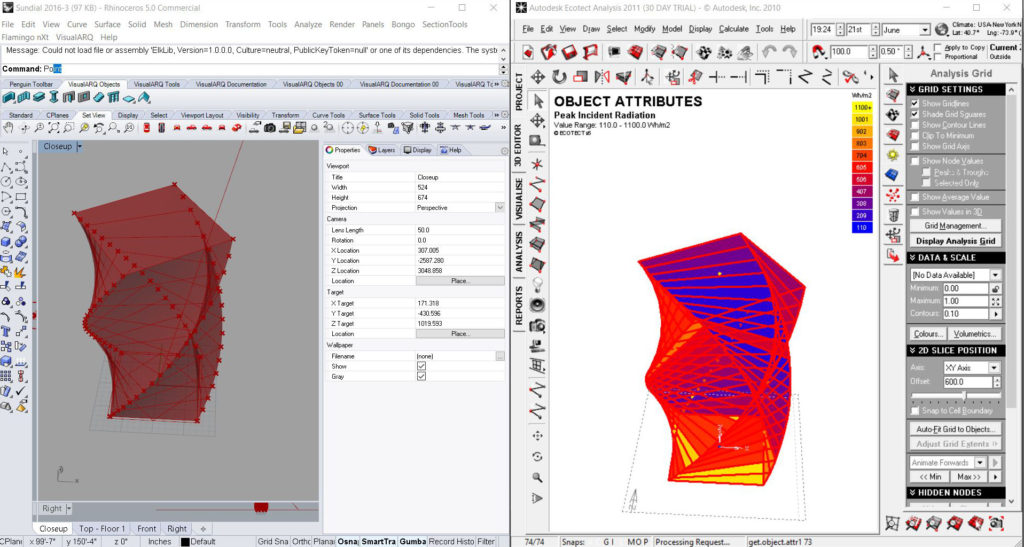
Architects try to find a balance between efficiency, comfort, form and aesthetics, but with building models becoming increasingly complex and difficult to manage, I believe that a better relationship between designers and the various tools employed could be the way forward. Algorithms that explore options for maximizing energy efficiency are in development, but many seem to be focused on HVAC systems rather than design. In addition, there is far more than energy use that should be considered for optimization, such as adjacency, lines of sight, stakeholder preferences, etc. Many things are certainly difficult, if not impossible, to quantify but I consider this as a challenge rather than a territory that is out-of-bounds.
If I could write an algorithm that could draw a point in the 7th dimension, and traverse the 6th dimension, the game is over and absolutely perfect optimization is the output. That doesn’t seem to be possible, but what I can do is write an algorithm that explores the 5th dimension of design space universes that I have created; modeled with constraints of math and physics. The numbers can quickly get out of hand, and brute-force is impossible. A quantum computer would help in this exploration of possibilities.
Despite the lack of a quantum computer, I seek to develop a set of algorithms that will allow me to cleverly explore the possibilities of design, and find combinations that can satisfy; if not optimally, at least in a way that pushes the boundaries of creativity. Along this path, it can be difficult to avoid iterative calculations that eat up too much RAM or take too long to compute, crashing my computer.
Configurators have their place, but I believe the designer must have the ability to modify the finer details to how the algorithms work in order to truly engage the design process. I imagine a future where architects and designers are developing their own algorithms, embedded with the essences of their logic and processes, giving them greater governance and ability to harness the power of computation in a more sophisticated way. Rather than developing a single tool that has a narrow application, it may be best to develop a framework that allows code savvy designers to explore the ways in which solutions are generated.
When I think of the perfect algorithm, I hope for the brilliance of DaVinci, the strength of the Hulk, the illusion of Houdini, and the technique of Vezzali. This should be easy.
$ git brilliant_archbot_algorithmI welcome any comments, criticism, suggestions, or corrections. I feel like I am still just dipping my feet into this topic that combines many of my passions, and hope to approach architecture, design, and mathematics appropriately as I do.
